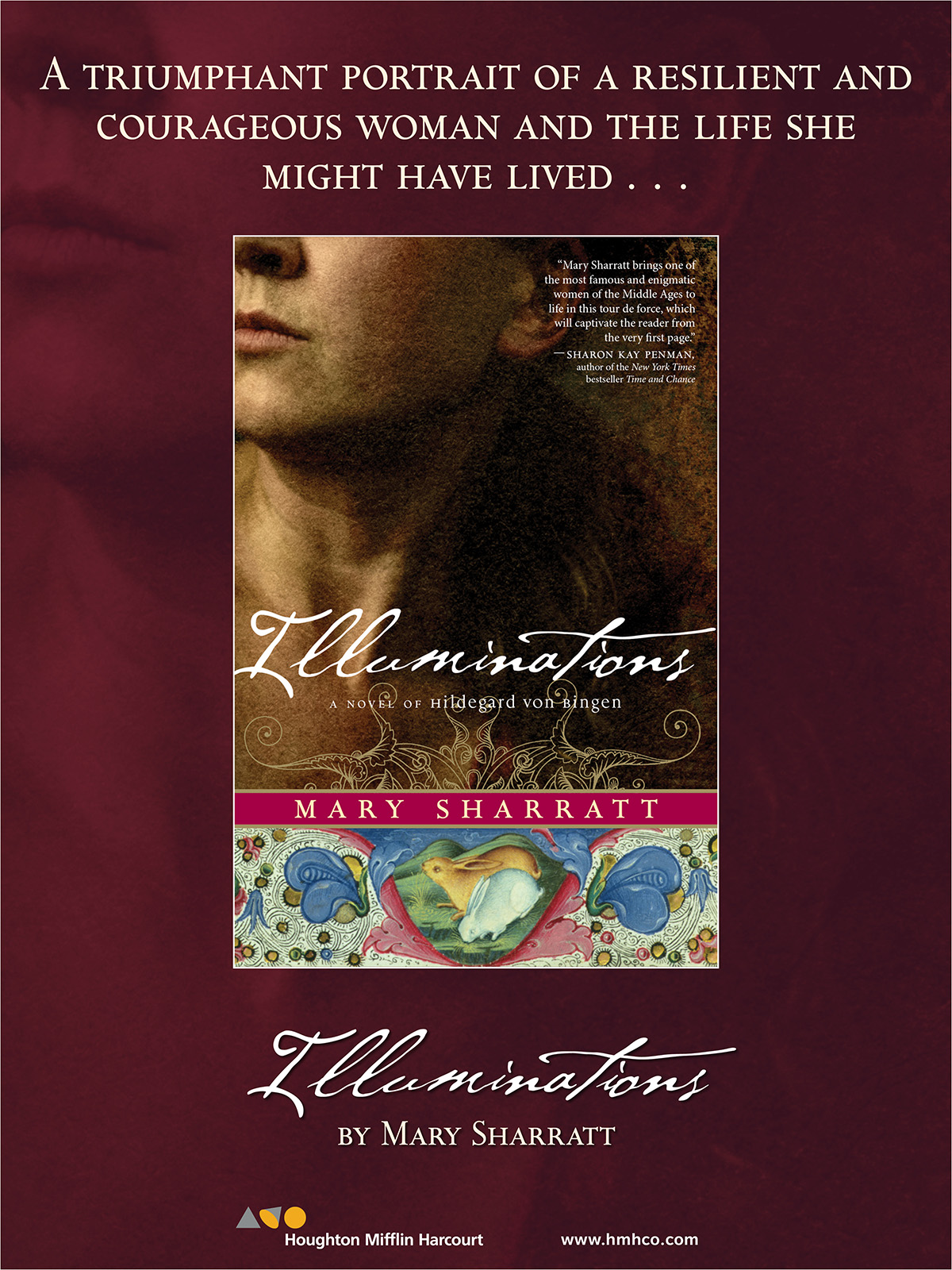The Dark Lady's Mask (59 page)
Read The Dark Lady's Mask Online
Authors: Mary Sharratt

But when Lanier died in Clerkenwell in 1645 at the age of seventy-six, she was listed as a pensioner, indicating some source of regular income. Though I have no proof, I would like to believe that her former pupil Anne Clifford supported her in her old age. By this time, Clifford had weathered two stormy marriages and outlived the uncle who had usurped her inheritance. After decades of adversity, the widowed Clifford triumphed to become one of the wealthiest and most powerful landowners in northern England. Readers may wish to visit the Countess Pillar near Penrith, Cumbria, which Anne built as a memorial to her beloved mother, Margaret.
While there is no evidence that Aemilia Bassano Lanier ever cross-dressed, some of her female contemporaries did so with gusto and aplomb, most notably the notorious Mary Frith, the real-life inspiration for Thomas Middleton and Thomas Dekker's comedy,
The Roaring Girl.
Female cross-dressing was a popular motif not just in English comedy but also across Europe. In his 1615 comedy
Don Gil of the Green Breeches,
Spanish playwright Tirso de Molina takes his cross-dressing heroine even further than Shakespeare did in
Twelfth Nightâ
de Molina's Donna Juana constantly switches gender identities while pursuing her absconding lover.
I have taken some liberties with dates and chronology. Robert Greene, whose pamphlet satirized Shakespeare as an “upstart crow,” died in 1592 and thus would not have been present at Southampton's party. Shakespeare's son, Hamnet, was buried in August 1596 and Lanier's daughter, listed as “Odillya” in the church registry, was baptized in December 1598 and buried in September 1599. The premiere of
Twelfth Night
did not take place until 1602.
Most sources name Aemilia's husband as Alfonso Lanier, not Alfonse. He may have been Lucrezia Bassano Lanier's son rather than her stepson, making him Franco-Italian rather than French. His voyage to the Azores with Essex took place in 1597 and his arrest for disturbing the peace in Hackney took place in 1609. While there is no evidence that Alfonso ever contracted the French pox (syphilis), Henry Carey's son George, the second Lord Hunsdon, died prematurely of the disease, which was commonplace in this era.
It is possible, though not provable, that Ben Jonson was related to Lanier on her mother's side of the family. Even if they were not related, they almost certainly knew each other as Alfonso's nephew, Nicholas Lanier, and his brother-in-law, Alfonso Ferrabosco, composed stage music for Jonson's plays and masques.
However, there is no evidence that the painter Jacopo Bassano was related to Battista Bassano and his brothers, or that Lanier's relations ever resided in the Casa dal Corno in Bassano del Grappa. Historians remain divided over the veracity of Battista Bassano's Jewish originsâsome suggest Battista and his brothers emigrated to England because they were Protestant. Riccardo Calimani's
The Ghetto of Venice
was essential reading in my attempt to portray Battista Bassano's history as a Marrano, a secret Jew. Not being Jewish myself, I am immensely grateful to my friend and colleague Sue Stern and my agent, Jennifer Weltz, who critiqued the manuscript from a Jewish perspective. Any mistakes are my own.
My portrayal of Anne Shakespeare as a brewer and businesswoman is drawn from Germaine Greer's book,
Shakespeare's Wife.
Undoubtedly, the biggest controversy this novel is likely to generate will be over my fictional portrait of William Shakespeare, not least because of my depiction of his sexuality and his writing some of his early comedies with aâfemale!âcollaborator.
Mainstream scholars have been speculating about Shakespeare's apparent attraction to other men for quite some time. Stephen Green-blatt's
Will in the World: How Shakespeare Became Shakespeare
was a huge influence on me, especially in regard to Greenblatt's reflections on Shakespeare's Catholic loyalties, his possible Lancashire connections, and his sexuality. Michael Wood has suggested that Shakespeare was probably bisexual. In his book and BBC series
In Search of Shakespeare,
Wood points out that the most beautiful and tender of Shakespeare's sonnets, including the iconic “Shall I Compare Thee to a Summer's Day?” are addressed not to a woman but to a fair youth, who may or may not be Henry Wriothesley, the Earl of Southampton, a fair youth if ever there was one. Why modern readers, in our age of gay pride and marriage equality, would find the idea of Shakespeare's love for other men offensive or disturbing is another question.
Moving on to the most contentious issue, the authorship debate: I am in no way stating that Shakespeare did not write his own work. However, most academics acknowledge that some of Shakespeare's plays were collaborations with other playwrights and that Shakespeare's plays were altered over time. Some earlier versions of his plays originally published in quarto form underwent significant revision before they were published in the First Folio of 1623. Perhaps it isn't so far-fetched to suggest Shakespeare worked with a collaborator on some of his early comedies then later reworked these same plays, editing out the collaborator's contributions to reflect his own individual voice and vision. As the late G. B. Harrison revealed in his edition of
Shakespeare: The Complete Works,
there was indeed an early version of
The Taming of the Shrew
in which Emelia undermines Kate's homily of wifely obedience by stating that she would rather be a shrew than a sheep.
As James Shapiro's
Contested Will: Who Wrote Shakespeare?
attests, the authorship debate has ceased to be a far-left-field conspiracy theory and has entered the academic mainstream. The discussion is unlikely to be resolved any time soon.
Any fictional treatment of Shakespeare that addresses his actual humanity and human foibles risks running the gauntlet of an army of ferocious Bardolators willing to fight to the death to defend their icon. But it is in no way a detraction from Shakespeare's undisputed genius to place him in context. He was no isolated monolith but instead a denizen of a richly interconnected, interwoven world of Renaissance poetry and drama. I believe readers will glean an even richer appreciation for Shakespeare if they read his work alongside the writings of his contemporariesâAemilia Bassano Lanier, Ben Jonson, Mary Sidney Herbert, Samuel Daniel, and the delightful Isabella Andreini.
A
CCOLADES AND PRAISE POEMS
for Jennifer Weltz, my agent, and for Nicole Angeloro, my editor, who studied Aemilia Bassano Lanier's
Salve Deus Rex Judaeorum
at Brown University. My deep appreciation goes out to the entire team at Houghton Mifflin Harcourt. I am also deeply indebted to David Hough, a most thorough and wise copy editor and fact-checker.
My heartfelt gratitude goes out to the kind people at the Jewish Museum in Venice, which was indispensable for my research.
Grazie
mille
to the wonderful staff at the City Library and Museum in Bassano del Grappa, where I was introduced to Jacopo Bassano's monumental paintings. Shakespeare's Globe in London is a fantastic resource, not just for Shakespeare's plays but his entire world. The British Museum's 2012 exhibition “Shakespeare: Staging the World” was absolutely riveting; it was here I discovered the novelty painting of the Venetian courtesan sporting breeches and a codpiece beneath her skirts. The Shakespeare Birthplace Trust does a fine job of stewarding the Stratford properties associated with Shakespeare's life. I particularly enjoyed my visit to New Place Gardens and Nash's House.
Endless love and thanks to my husband, Jos Van Loo, who read
The Dark Lady's Mask
in manuscript and accompanied me on my many research trips, museum jaunts, and theater visits. A wreath of laurels for my writers' group, that circle of enthroned Muses: Cath Staincliffe, Sue Stern, Catherine Robinson, Olivia Roberts, and Anjum Malik. The Historical Novel Society continues to be a nurturing community and font of inspiration. Lastly, I wish to lay a garland of carrots at the hooves of Mistress Boo, my equine Muse, who appears in the novel as Aemilia's beloved Bathsheba.

Visit
www.hmhco.com
or your favorite retailer to order the book.

The author of five critically acclaimed novels, M
ARY
S
HARRATT
is an American who has lived in Germany and England for more than two decades. A passionate Shakespeare enthusiast, her explorations into the hidden histories of Renaissance women compelled her to write this book. She lives in Lancashire, England.
